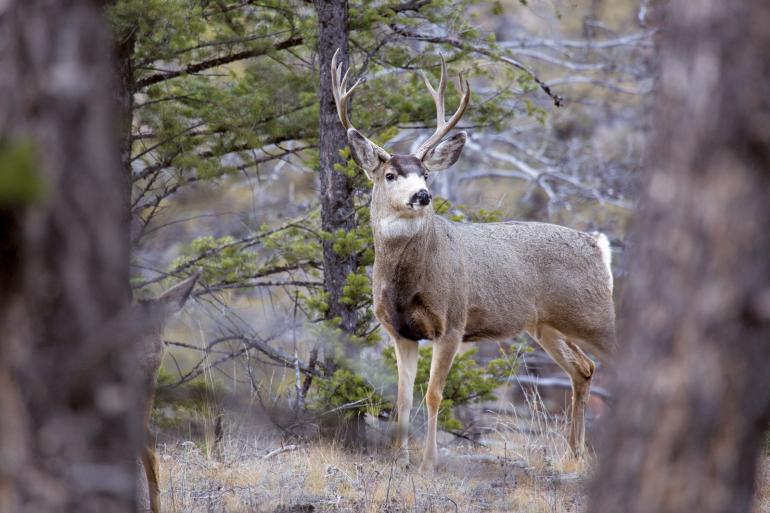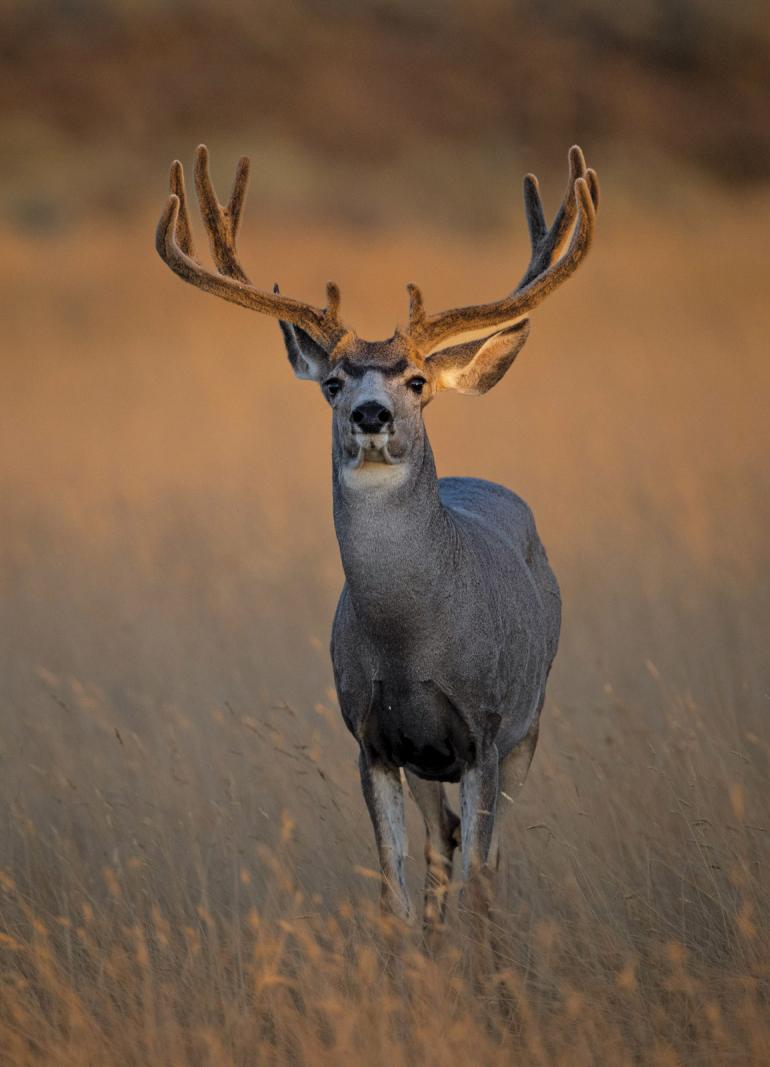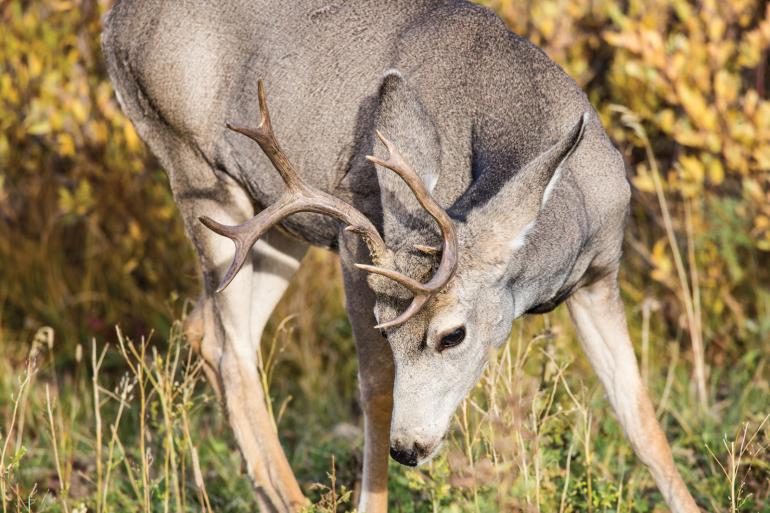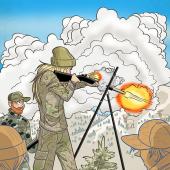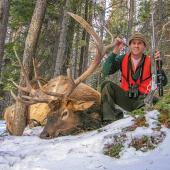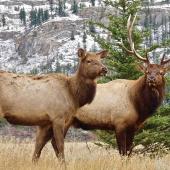Big Sky Bucks
The beginner's guide to chasing mule deer in Montana.
Mule deer are a western icon. Just looking at a picture of big muley buck can have you smelling sage brush and dreaming of climbing through rocky canyons and glassing endless miles of snowcapped peaks. Many new mule-deer hunters think that it’s easy to shoot a buck. They see the deer along roadways or on nature hikes, staring curiously at passersby, and feel like they could walk up and knock a buck down with a stick.
It’s a deceptive trophy. Come autumn, these seemingly fearless deer become ghosts, bounding away at the slightest provocation, and vanishing into the rugged landscape whence they came. Hunting mule deer is a dedicated undertaking, but the rewards of pursuing the deer in the gorgeous mountains and grasslands of southwest Montana make them a challenge worth rising to meet.
Most hunters begin to scout for muleys during the late summer when the deer are out feeding during the day, offering chances to locate quality bucks.
Habitat
Mule deer can be found in a variety of terrain. From the tall timber of the mountains to grass-rich bottomlands to boulder-strewn canyons, anywhere with sufficient food—and more importantly, water—will likely have a mule deer or two. Muleys are roving foragers, traveling constantly between feeding areas and water sources. Occasionally these animals will journey more than 150 miles in just a few days, though this is primarily when migrating between their summer and winter ranges.
Savvy muley hunters usually have success by hunting areas with a lot of forage like shrubs, brush, and grasses, along with water sources such as small streams, ponds, or springs. This can be especially effective in the early season and on warmer days, as muleys tend to gather around waterways during these times. Glassing and hunting along transition zones where open meadows meet thicker timber can also be a good strategy, as the deer use these areas for both feeding and bedding.
Behavior
As previously mentioned, mule deer are somewhat unique in the deer world as they have distinct summer and winter ranges. During the summer, they live high up in the mountains and then as cold weather moves in, they’ll drop down to foothills and fields at lower elevations. This migration typically takes place in late November, but can happen earlier, particularly during cold years or when there’s an excessive amount of snowfall.
Most hunters begin to scout for muleys during the late summer when the deer are out feeding during the day, offering chances to locate quality bucks. Generally, the deer will remain on the same mountain or in the same basin for weeks or even months, giving you a good place to start hunting once the season rolls around. Spend some time looking over topographic maps and satellite images, noting any areas of elevation drop and obvious travel routes that the deer may be using when migrating between their summer and winter ranges. Pay special attention to any burns from forest fires in dense timber, or any large open flats along mountainsides you find. Then hike into these areas and really get to know the terrain you’ll be hunting so that you can locate the different areas the deer may be utilizing during fall.
You never want to leave the house without a good pair of boots, a sharp knife, and a pack, but there are other things you should bring along on a mule deer hunt.
Rut
Usually occurring around the third week of November, the rut is when big mule deer bucks give up their solo existence and begin keying in on does. The rut is an ideal time to hunt, as these normally elusive bucks become distracted by the ladies and are much easier to sneak in on. If you find a large group of does during the rut, keep your eyes on them, because it won’t be long before a good buck comes along.
Gear
You never want to leave the house without a good pair of boots, a sharp knife, and a pack, but there are other things you should bring along on a mule deer hunt. A good pair of binoculars and a spotting scope with a tripod can be complete game-changers as you’ll often spend hours glassing. Additionally, as the weather in southwest Montana can be completely unpredictable, it’s a good idea to bring along a few additional layers of clothes, especially on glassing days. If you’re hunting the backcountry, be sure to bring along a first-aid kit, a GPS, and a satellite communicator, just to be on the safe side in case the worst happens.
Bow vs. Rifle
Bow hunting for mule deer is a challenge. During archery season, bucks are high in the mountains and can be extremely tough to find, not to mention pack out. Muleys don’t respond to calls as elk do, so it’s a spot-and-stalk game with all the odds in the deer’s favor, though there are many hunters who appreciate such a challenge.
Rifle hunters have a much easier time, as they can hunt during the rut and take longer shots. As far as calibers go, almost anything from your grandpa’s old .30-06 carbine to a high-end 6.5 Creedmoor will work. It’s best to use a rifle with which you’re very comfortable and accurate, as mule deer often require long shots, especially in open grasslands and mountainsides where they’re hard to approach undetected.
Pack-Out
Marching out of the mountains with a mule-deer buck is part of the iconic western mystique. If you’re close to the truck, this can be done with a simple rope around the antlers or by dragging it out on a sled. If you’re farther in the backcountry, you can quarter the deer and bring it out in a couple loads. Do your research and know both the terrain and your physical capabilities so that you can get the meat home as quickly as possible.
Regs
Given the ten full weeks of archery and rifle seasons, hunters have plenty of time to notch their tags on a buck. Additionally, there are some special-permit doe tags and even some districts that allow hunters to harvest does with their general license, particularly during bow season. Consult the FWP regulations so you’re certain about the rules and regs before heading out into the field.
Kubie Brown has been a fishing and hunting guide for over ten years. He’s also a freelance writer whose articles have been published in The Drake and on MeatEater, among other places. He lives in southwest Montana.

